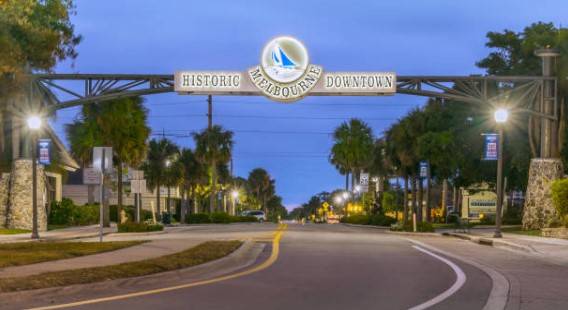
Interested in the history of Melbourne, FL? Melbourne is a picturesque city located in east-central Florida within the jurisdiction of Brevard County. This beautiful waterfront community offers a balmy climate and captivating scenery for all to enjoy. With an estimated population of around 83,000 residents according to a 2018 population survey, Melbourne is the second-largest and most populated metropolis in the County. As such, the city is a principal member of the Palm Bay-Melbourne-Titusville Metro Area.
Recent archeological discoveries have shown that the Melbourne city area was originally inhabited by the Paleo-Indians sometime during the Pleistocene epoch. Some of these findings include human remains, tools, and weapons made from bones and other substances. However, modern-day Melbourne was first settled in 1867 after the civil war. Although the area remained quite undeveloped for over a decade, more new settlers arrived in 1877, among them three freed black men.
Originally known as Crane Creek, the name was changed to Melbourne in honor of Cornthwaite John Hector, a former resident of Melbourne, Australia, and the first postmaster of the city. Melbourne grew rapidly in the 1880s especially with the construction of the first school and the first church in the town. By 1885, there were 70 people living in Melbourne.
During the early 1900s, the city was completely destroyed by a fire, and a new town sprouted along US Hwy 1. The town was notoriously affected by the Jim Crow laws, with racial discrimination against people of color going on until the late 1960s. In 1969, the residents of the city of Eau Gallie and those of Melbourne City voted in favor of the amalgamation of the two cities. Consequently, Melbourne’s total area increased to twice its original size.
Today, Melbourne is a simple city with lots of great modern features, natural attractions and historical points of interest. There are numerous well maintained public parks for the area residents and visitors to enjoy, including the likes of Wickham Park and Ballard Park on the Indian River Lagoon. This makes tourism one of the main sources of income in the city, together with the burgeoning tech industry. Other notable features of the city include two well-established business districts that resulted from the merger with Eau Gallie, great infrastructure and a well-established education system.
In early 2017, a crowd of around 10,000 people gathered at the Orlando Melbourne International Airport, outside Melbourne’s downtown district, to attend President Donald Trump’s post-inauguration rally.
